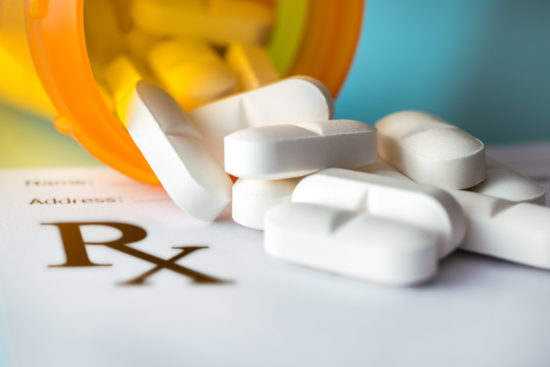The inheritance powder
- Oovia Elangovan

- May 16
- 4 min read
The inheritance powder: A name that White Arsenic (arsenic trioxide) had gotten in the 17th and 18th century for the ubiquity of its use in getting rid of family members in the battle for priced possessions. As2O3 has been used for centuries for many purposes all the way from medicine to murder.
In the past, it was a challenge to charge a person against the guilt of a murder in these arsenic poisoning cases because there wasn’t a chemical test that could produce solid evidence in court. It was then when Carl Wilhelm Scheele first came up with a confirmation test whereby he reacted arsenic trioxide with nitric acid and zinc to produce arsine (AsH3), which is a gas with garlic odour.
Its use in medicine
White arsenic is usually found together with other metals such as iron, lead and copper buried in the ground and what is surprising is that traditional medical practitioners many centuries ago had the knowledge of metallurgy, toxicology and medicinal preparation using heavy metals that they were able to extract white arsenic and use it to treat various diseases.
Siddhars have documented their observations in the form of a 4-versed song which describes the diseases that can be treated with the use of arsenic trioxide in the right form in its right dosage.
“வெள்ளை பாடாணம் விடங்கடித்தீ ரும்பூசக்
கொள்ளைச் சுரத்தோஷங் கோரசந்நி- தோள்ளையுறு
நாசிப்புண் வாய்ப்புண் நனைகிரந்தி போமுன்ன
ஆசிக்குங் கும்பமுலை ஆய்”
The modern science equivalent to these diseases stated in the poem would be (with reference to TV Sambasivam Pillai dictionary),
→ விஷக்கடி (Vishakadi): bites of poisonous creatures
→ கொள்ளைக் காய்ச்சல் (Kollai kaichal): infectious epidemic fever
→ சந்நி (Sanni): Fever arising from the affection of the bowels, ulceration of the intestines, and swelling of the mesenteric glands. It is characterised by diarrhoea, violent cough, hard breathing, bewilderment, headache, pain in the limbs, red or blood-shot eyes, shivering, chillness, etc.
→ கிரந்தி (Kiranthi): glandular swelling in the form of an abscess occurring chiefly in neck, armpit, groin etc. Examples include venereal or syphilitic sores.
Interestingly, in Unani medicine, arsenic trioxide has been used as an aphrodisiac. Moreover, this has been identified as a good immunomodulator which is probably why it has been mentioned that arsenic trioxide can be used in medicine preparation for infectious epidemic fevers.
It is also important to note that White arsenic is now accepted in western medicine as the first line chemotherapeutic agent against certain hematopoietic cancer too.
Medicine preparations using Arsenic trioxide in Siddha medicine
In Siddha medicine, white arsenic is called as Vellai paadaanam (வெள்ளைபாடாணம்) and it is one of the 64 types of Arsenical compounds (Paadaanam) which is known to be highly poisonous. However, they can be used in medicinal preparations after complex purification processes and appropriate anti-dotes have also been stated in texts like Bogar 7000 and Theraiyar Yemaga Venba .
Some preparations using this heavy metal includes,
→ Padaana parpam (பாடாண பற்பம்) :This is obtained through a calcination process (which takes 9 hours) with the use of the ash of Solanum surattense. This is also known as “medicinal ash” which has a shelf-life period of 100 years.
→Padaana senthooram (பாடாணச் செந்தூரம்): ‘Senthooram’ is a category of medicine with reddish colour and powder form and it retains potency for 75 years. This involves processes such as detoxification, trituration and incineration. Potassium nitrate (வெடியுப்பு) is mainly used in this preparation.
→Padaana mathirai (பாடாண மாத்திரை): This is a tablet preparation making use certain minerals and herbs such as ferric sulphate with the chemical formula of Fe2SO4.7H2O (annabethi senthooram), Borax and Piper nigrum.
Beyond these 3 major preparations there are also, Paashaana mezhugu, Paashaana kattu, and so on.
CONCLUSION
Siddhars carefully determined the safe dosage for consumption and they came up with complex purification and detoxification processes. Unfortunately many such medicinal preparations using heavy metals are not being put to practical use and are only being studied in texts.
Not much research for drug standardisation is being done and this is the prime reason for the slow rate of progress in the standardisation of Indian medicine. Siddha practitioners and educators need to step out of their comfort zone and get involved in research to produce prospective analysis on the use of such heavy metals in the form of medicine.
Reference
[1] Compound Interest (January 15, 2015) The Chemistry of Poisons – White Arsenic, Available at: https://www.compoundchem.com/2015/01/15/arsenic/ (Accessed: 5th June 2020).
[2] Dr. Steve Gilbert (May 19, 2011) A Small Dose of Arsenic, Available at: https://www.healthandenvironment.org/docs/ToxipediaASmallDoseofArsenic.pdf (Accessed: 12th June 2020).
[3]Ashok Kumar Panda, Jayram Hazra (2012) 'ARSENICAL COMPOUNDS IN AYURVEDA MEDICINE: A PROSPECTIVE ANALYSIS', International Journal of Research in Ayurveda and Pharmacy, 3(6)(DOI: 10.7897/2277-4343.03614), pp. 772-775.
[4] P. Rajalakshmi,R. Geetha Sudeer, V. Vadivel, C. S. Sahayam, P. Brindha (12 October 2017) Analytical studies on Annabethi Chenthuram, A Siddha Herbomineral Formulation, Available at: https://www.ijpsonline.com/articles/analytical-studies-on-iannabethi-chenthurami-a-siddha-herbomineral-formulation-3414.html (Accessed: 13th June 2020).
[5] குணப்பாடம் தாது-சீவம்
[6] TV Sambasivam Pillai dictionary







Comments